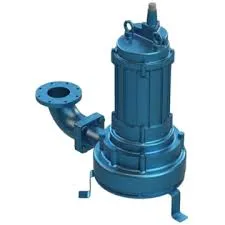English
- Afrikaans
- Albanian
- Amharic
- Arabic
- Armenian
- Azerbaijani
- Basque
- Belarusian
- Bengali
- Bosnian
- Bulgarian
- Catalan
- Cebuano
- Corsican
- Croatian
- Czech
- Danish
- Dutch
- English
- Esperanto
- Estonian
- Finnish
- French
- Frisian
- Galician
- Georgian
- German
- Greek
- Gujarati
- Haitian Creole
- hausa
- hawaiian
- Hebrew
- Hindi
- Miao
- Hungarian
- Icelandic
- igbo
- Indonesian
- irish
- Italian
- Japanese
- Javanese
- Kannada
- kazakh
- Khmer
- Rwandese
- Korean
- Kurdish
- Kyrgyz
- Lao
- Latin
- Latvian
- Lithuanian
- Luxembourgish
- Macedonian
- Malgashi
- Malay
- Malayalam
- Maltese
- Maori
- Marathi
- Mongolian
- Myanmar
- Nepali
- Norwegian
- Norwegian
- Occitan
- Pashto
- Persian
- Polish
- Portuguese
- Punjabi
- Romanian
- Russian
- Samoan
- Scottish Gaelic
- Serbian
- Sesotho
- Shona
- Sindhi
- Sinhala
- Slovak
- Slovenian
- Somali
- Spanish
- Sundanese
- Swahili
- Swedish
- Tagalog
- Tajik
- Tamil
- Tatar
- Telugu
- Thai
- Turkish
- Turkmen
- Ukrainian
- Urdu
- Uighur
- Uzbek
- Vietnamese
- Welsh
- Bantu
- Yiddish
- Yoruba
- Zulu
Telephone: +86 13120555503
Email: frank@cypump.com
Jul . 27, 2024 06:28 Back to list
Understanding the Functionality and Importance of Sewer Ejection Pumps in Wastewater Management Systems
Understanding Sewer Ejection Pumps A Comprehensive Overview
Sewer ejection pumps, often referred to as sewage pumps or sewage ejector pumps, play a crucial role in the management of wastewater in residential and commercial settings. These pumps are specifically designed to transport sewage and greywater from locations that are below the level of the municipal sewer line, ensuring the efficient disposal of waste materials and the maintenance of sanitary conditions.
How Sewer Ejection Pumps Work
The fundamental operation of a sewer ejection pump involves the movement of sewage through pipes using a combination of mechanical energy and hydraulic force. When wastewater accumulates in a sump basin, a float switch within the pump detects the rising water level and activates the pump. The pump then expels the sewage through discharge pipes and up to a higher elevation where it can enter the local sewer system.
Many sewer ejection pumps are equipped with a grinder or impeller mechanism designed to break down solid waste materials into smaller particles. This functionality is essential because it prevents clogs in the plumbing system and ensures the smooth flow of wastewater through the pipes. The process of grinding is particularly important when the pump is required to handle materials that would otherwise obstruct standard gravity drainage systems.
Applications of Sewer Ejection Pumps
Sewer ejection pumps are commonly found in various applications including residential homes, commercial buildings, and industrial facilities. In residential settings, these pumps are often employed in basements or lower levels where gravity drainage is not feasible. For example, homes with plumbing fixtures like toilets, sinks, or washing machines located below the main sewer line require ejection pumps to lift the waste to an appropriate disposal point.
In commercial settings, these pumps are indispensable in restaurants, hotels, and other facilities where large volumes of wastewater are generated. Industrial applications may require more heavy-duty pumps to handle extensive wastewater discharge from manufacturing processes or treatment facilities.
sewer ejection pump

Advantages of Using Sewer Ejection Pumps
One of the primary advantages of sewer ejection pumps is their ability to prevent costly plumbing issues associated with clogs and backups. By effectively moving wastewater away from low-lying areas, these pumps help maintain the integrity of the plumbing system and avoid sanitary hazards.
Moreover, modern sewer ejection pumps are designed with energy efficiency in mind. Many models now utilize advanced technology to minimize energy consumption, making them both eco-friendly and cost-effective over time. Additionally, some pumps are equipped with alarms and monitoring systems that provide real-time performance data, enabling property owners to react promptly to any potential issues.
Maintenance Considerations
While sewer ejection pumps are generally robust and reliable, regular maintenance is essential to ensure their longevity and efficient operation. Homeowners and facility managers should routinely inspect the pump's components, including the float switch, impeller, and discharge pipes, for any signs of wear or damage.
Cleaning the pump and sump basin is also crucial to prevent debris buildup that can lead to operational failures. It is advisable to consult the manufacturer's guidelines for maintenance schedules and procedures to extend the life of the pump and optimize its performance.
Conclusion
In conclusion, sewer ejection pumps are an essential component of wastewater management systems. Their ability to efficiently transport sewage from lower elevation points to sewer lines ensures the hygiene and functionality of residential and commercial plumbing. Understanding the workings, applications, and maintenance needs of these pumps can lead to better management of wastewater systems, ultimately contributing to public health and environmental protection. Proper attention to these systems is not only beneficial for property owners but also necessary for the overall well-being of the community.
-
Horizontal Split Case Pump with GPT-4 Turbo | High Efficiency
NewsAug.01,2025
-
ISG Series Pipeline Pump - Chi Yuan Pumps | High Efficiency, Durable Design
NewsAug.01,2025
-
Advanced Flue Gas Desulfurization Pump with GPT-4 Turbo | Durable & Efficient
NewsJul.31,2025
-
ISG Series Vertical Pipeline Pump - Chi Yuan Pumps | Advanced Hydraulic Design&Durable Construction
NewsJul.31,2025
-
ISG Series Vertical Pipeline Pump - Chi Yuan Pumps | Energy Efficient & Low Noise
NewsJul.31,2025
-
pipeline pump - Chi Yuan Pumps Co., LTD.|High Efficiency&Low Noise
NewsJul.31,2025










